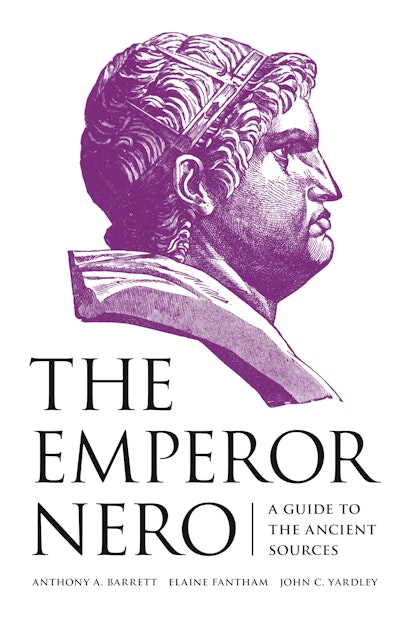Nero’s reign (AD 54–68) witnessed some of the most memorable events in Roman history, such as the rebellion of Boudica and the first persecution of the Christians—not to mention Nero’s murder of his mother, his tyranny and extravagance, and his suicide, which plunged the empire into civil war. The Emperor Nero gathers into a single collection the major sources for Nero’s life and rule, providing students of Nero and ancient Rome with the most authoritative and accessible reader there is.
The Emperor Nero features clear, contemporary translations of key literary sources along with translations and explanations of representative inscriptions and coins issued under Nero. The informative introduction situates the emperor’s reign within the history of the Roman Empire, and the book’s concise headnotes to chapters place the source material in historical and biographical context. Passages are accompanied by detailed notes and are organized around events, such as the Great Fire of Rome, or by topic, such as Nero’s relationships with his wives. Complex events like the war with Parthia—split up among several chapters in Tacitus’s Annals—are brought together in continuous narratives, making this the most comprehensible and user-friendly sourcebook on Nero available.
Anthony A. Barrett is professor emeritus of classics at the University of British Columbia. His books include Livia: First Lady of Imperial Rome. Elaine Fantham is the Giger Professor of Latin, emerita, at Princeton University. Her books include Roman Literary Culture: From Plautus to Macrobius. John C. Yardley is professor emeritus of classics and religious studies at the University of Ottawa. His books include Alexander the Great: Historical Sources in Translation.
"The Emperor Nero is a guidebook to literary and primary sources on early imperial Rome that specifically relate to Nero Claudius Caesar Augustus Germanicus (37-68 CE), the final Julio-Claudian emperor. Classicists Barrett, Fantham, and Yardley divide the book into topical chapters covering subjects ranging from Nero's rise to power and foreign imperial conquests to his personal life and palace intrigues."—Choice
"A superb addition to current interest in Nero, not least because its authors form an all-star team for any study of Neronian Rome."—Lauren Ginsberg, Bryn Mawr Classical Review
"All three contributors to this book bring authority as well as readable exposition to thisadmirable project. Much is fresh and clearly translated source-text, lively rather than bland. This compilation provides an excellent resource for students and scholars of the Julio-Claudian period and more broadly of the early Principate. Meticulous scholarship throughout will rightly impress general readers, though many will likely find some parts less thrilling than others. In any case, all will be fascinated by the cumulative portrait that emerges of a Nero who prompted contemporaries so to represent and often to caricature him, later generations of writers to evaluatehim, that notorious young suicide who in the end resists simplistic vilification."—Victor Castellani, European Legacy
"The most learned sourcebook I have ever seen."—Miriam T. Griffin, author of Nero: The End of a Dynasty
"This extremely well-informed and judicious sourcebook collates the most important evidence on the life and reign of the emperor Nero. No one has organized this material in this way before and provided such a rich and accessible commentary on these difficult sources."—T. Corey Brennan, author of The Praetorship in the Roman Republic


